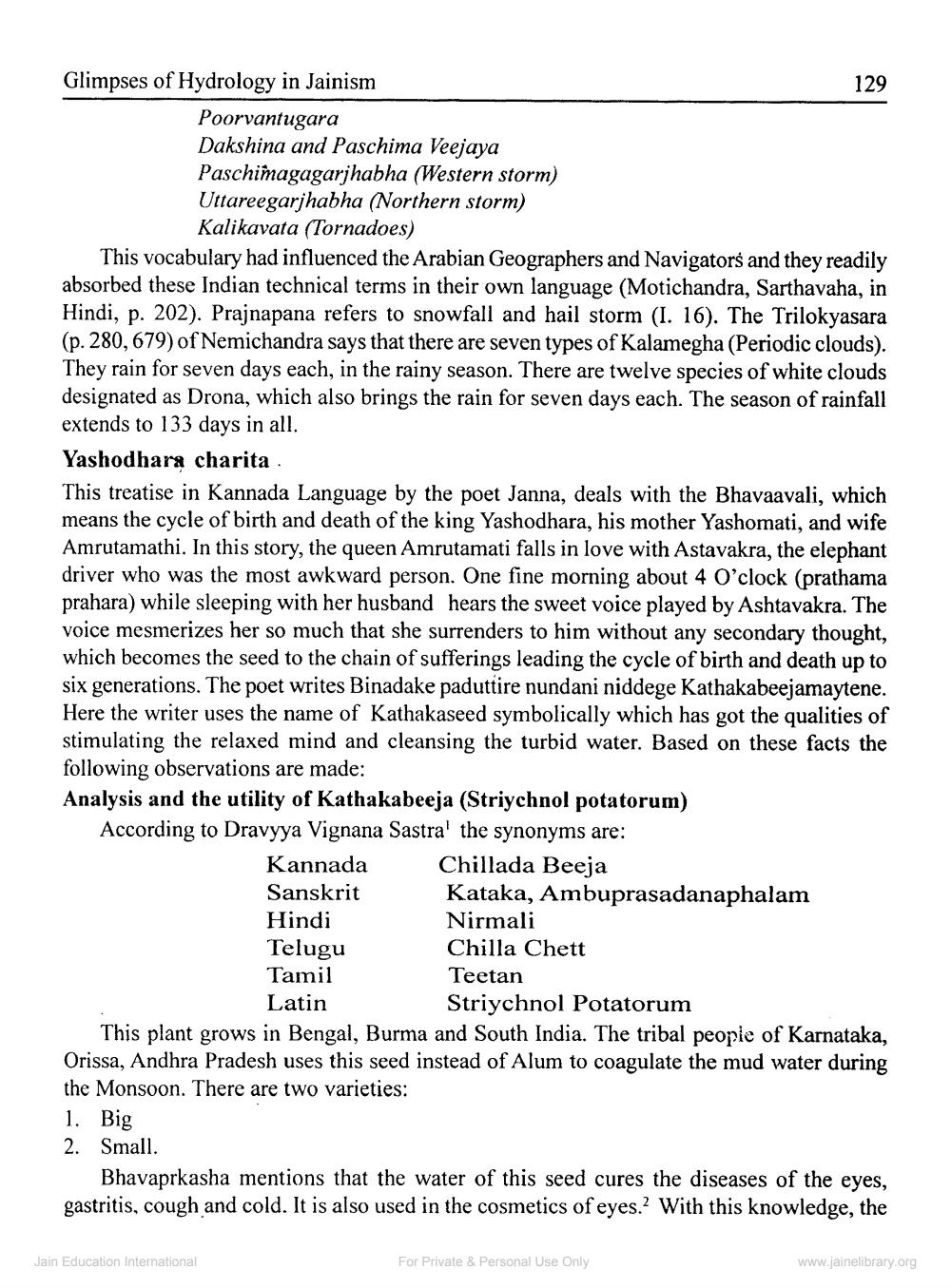________________
129
Glimpses of Hydrology in Jainism
Poorvantugara Dakshina and Paschima Veejaya Paschimagagarjhabha (Western storm) Uttareegarjhabha (Northern storm)
Kalikavata (Tornadoes) This vocabulary had influenced the Arabian Geographers and Navigators and they readily absorbed these Indian technical terms in their own language (Motichandra, Sarthavaha, in Hindi, p. 202). Prajnapana refers to snowfall and hail storm (. 16). The Trilokyasara (p. 280, 679) of Nemichandra says that there are seven types of Kalamegha (Periodic clouds). They rain for seven days each, in the rainy season. There are twelve species of white clouds designated as Drona, which also brings the rain for seven days each. The season of rainfall extends to 133 days in all. Yashodhara charita This treatise in Kannada Language by the poet Janna, deals with the Bhavaavali, which means the cycle of birth and death of the king Yashodhara, his mother Yashomati, and wife Amrutamathi. In this story, the queen Amrutamati falls in love with Astavakra, the elephant driver who was the most awkward person. One fine morning about 4 O'clock (prathama prahara) while sleeping with her husband hears the sweet voice played by Ashtavakra. The voice mesmerizes her so much that she surrenders to him without any secondary thought, which becomes the seed to the chain of sufferings leading the cycle of birth and death up to six generations. The poet writes Binadake paduttire nundani niddege Kathakabeejamaytene. Here the writer uses the name of Kathakaseed symbolically which has got the qualities of stimulating the relaxed mind and cleansing the turbid water. Based on these facts the following observations are made: Analysis and the utility of Kathakabeeja (Striychnol potatorum) According to Dravyya Vignana Sastral the synonyms are:
Kannada Chillada Beeja Sanskrit Kataka, Ambuprasadanaphalam Hindi
Nirmali Telugu
Chilla Chett Tamil
Teetan Latin
Striychnol Potatorum This plant grows in Bengal, Burma and South India. The tribal people of Karnataka, Orissa, Andhra Pradesh uses this seed instead of Alum to coagulate the mud water during the Monsoon. There are two varieties: 1. Big 2. Small.
Bhavaprkasha mentions that the water of this seed cures the diseases of the eyes, gastritis, cough and cold. It is also used in the cosmetics of eyes. With this knowledge, the
Jain Education International
For Private & Personal Use Only
www.jainelibrary.org




